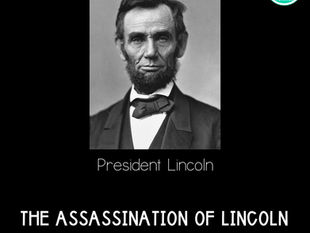
Are you a student learning about the Civil War? Are you a teacher preparing to teach about the Civil War? This website is for both of you! It will even be helpful if you are just curious about the Civil War.
If you are a student, you can read about the Battle of Antietam in the sections below. If you have questions as you read, you can send me a message, and I will do my best to get back to you.
If you are a teacher, you can use this website as a resource for yourself and your students, or you can purchase my printable reading passages and comprehension questions. They are available at Teachers Pay Teachers.

The Battle of Antietam
September 17, 1862
The Battle of Antietam was the bloodiest day in the entire military history of the United States. Having pushed Union forces back from Richmond, General Lee was determined to attack the North on their own soil. He was hopeful that winning a battle in Maryland would convince the state to secede and join the Confederacy.
Lee shared his plans with his generals, wrapping the orders around cigar bundles. One of these bundles was dropped in a field at Best Farm. Union troops found the bundle, but a Confederate spy learned of the discovery and reported it back to Lee. McClellan also made the mistake of waiting more than seventeen hours to act on the intelligence.
On the morning of September 17, the Union and Confederate forces met in Miller’s cornfield near Dunker Church. The large amount of artillery being used turned the cornfield into a “slaughter pen.” There were almost fifteen thousand casualties that morning alone. Later in the day, Union and Confederate soldiers engaged again at the sunken road. The road had been used by wagons for years and had sunk to form a protective trench. The Confederate soldiers waiting within the road as the Union troops marched toward the center of the
Confederate line. The Confederates were able to hold off the Union soldiers for a while, but wave after wave of troops marched toward the road. Eventually, the Union was able to take the road. After the intense fighting, it was filled with the corpses of nearly two thousand Confederate soldiers.
The final battle that day took place at what is now called the Burnside Bridge (named after Union General Burnside). The Confederates were stationed on a high bluff overlooking the bridge, able to shoot down anyone trying to cross it. It took three tries, but eventually, the Northern soldiers were able to cross the bridge. At the end of the day, the Union line was only about one hundred yards from where it had started the day before. At the end of the day, there were a total of twenty-three thousand casualties. Lee’s plan to invade the North had failed, and he quietly slipped back down to Richmond. McClellan refused to pursue Lee. Believing that McClellan could have ended the war by further engaging Lee, President Lincoln fired his general.
While Antietam could only be described as a draw, it gave Lincoln enough clout to issue the Emancipation Proclamation. All slaves within the Confederacy were now free, according to the North. It is important to note that the Emancipation Proclamation did not free slaves living within the Union. Slaves would not be free throughout the country until the end of the Civil War.
Want to learn more about the Civil War? Check out the links below!
Causes of the Civil War
The Battle of Chancellorsville
The Battle of Spotsylvania Court House
The Second Battle of Cold Harbor
Surrender at Appomattox Court House






